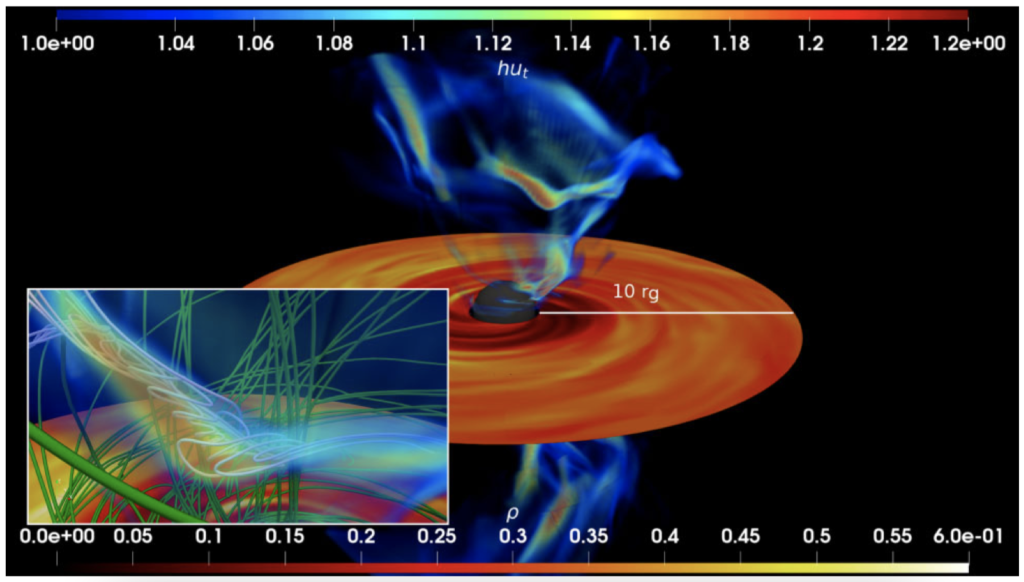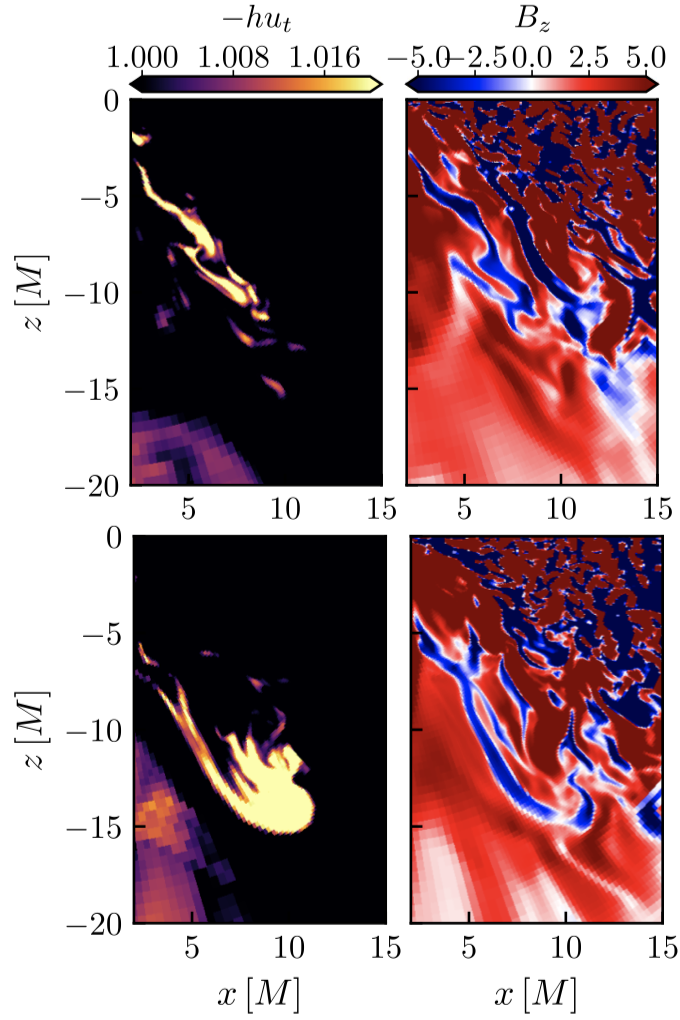Magnetic reconnection is a sudden reconfiguration of the magnetic field lines that releases energy in the medium around the magnetic field. Magnetic reconnection is thought to be one of the main mechanisms fueling energy from the magnetic field into the plasma in the vicinity of a black hole. Indeed, magnetic reconnection leads to the formation of plasmoids–regions of very strong magnetic field–, that may play a key role in the gamma-ray, X-ray and near-infrared flares of the black hole at the centre of our galaxy, SgrA ∗.

material ejected above the disk. The inset on the bottom-left is a zoom on the plasmoid. These regions of high magnetic field could play a key role in generating the X-ray and infrared flares from active galactic nuclei, which host supermassive black holes. [Image: the authors, Nathanail et al., 2022]
In this new publication, we conduct 3D general-relativistic ideal and resistive magnetohydrodynamics simulations in order to study magnetic reconnection and the formation of plasmoids in accretion flows around astrophysical black holes.

With respect to similar works, our simulation is more realistic, with accretion discs having an initial dipolar magnetic-field configuration with loops of alternating polarity. In the simulation, we find that current sheets are formed and destroyed rapidly in the turbulent environment of black hole accretion. Plasmoids are formed from current sheets close to the event horizon, in a region of ∼2–15 gravitational radii. We further quantify the energy transfer to the plasmoids, reporting the reconnection rate, the relative current density with respect to the local magnetic field, and the size of the plasmoids. We find that plasmoids indeed gain energy through reconnection and heat up to relativistic temperatures, with the largest ones being sufficiently energetic to leave the black hole vicinity towards the polar regions above the black hole. During their evolution, plasmoids are stretched and elongated, up to disruption when the shear is sufficiently large, although some plasmoids survive as well-defined structures at distances of ∼30–40 gravitational radii from the black hole. This work is a great step forward in bridging the gap between the relativistic physics near the black hole and the astronomical signals that wee can see from thousands of light-years away.